The world has no outside, no beyond, since it contains and embraces everything
Guillaume d’Auvergne (De Universo, 1231)
If the Universe is finite, it seems necessary for it to have a center and a frontier. The center poses hardly any conceptual difficulty: it suffices to place the Earth there, like the geocentric systems of Antiquity (appearances lead one in this direction), or the Sun, as Copernicus did in his heliocentric system. The notion of an “edge” of the Universe is on the other hand more problematic.
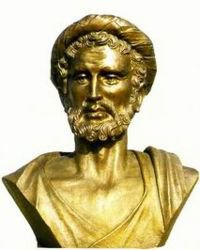
In the fifth century BCE, the Pythagorean Archytas of Tarentum described a paradox that aimed to demonstrate the absurdity of having a material edge to the Universe. His argument would have a considerable career in all future debates on space: if I were at the extremity of the sky, could I extend my hand or stick out a staff? It is absurd to think that I could not; and if I could, that which is found beyond is either a material body, or space. I could therefore move beyond this once again, and so on. If there is always a new space towards which I can extend my hand, this clearly implies an expanse without limits. There is therefore a paradox: if the Universe is finite, it has an edge, but this edge can be passed through indefinitely.
This line of reasoning was taken up by the atomists, such as Lucretius, who gave the image of a spear thrown to the edge of the Universe, and afterwards by all the partisans of an infinite Universe, such as Nicholas of Cusa and Giordano Bruno.
It is clear that, if one conceives of the Universe as a space enclosed by some kind of envelope, for example the surface of the sphere of fixed stars as imagined by Plato and Aristotle, the paradox is unsolvable. But over the course of centuries, the defenders of the finite Universe attempted to find satisfying explanations. One of them, which came from the Aristotelian doctrine as revised in the Christian Middle Ages, proposed a gradual border: the physical world, the realm of corruptible elements, changed itself progressively to the spiritual world, of incorruptible nature. This solution could resolve the paradox in two ways: either the spear, made of terrestrial elements, fell again towards its natural place, which was the Earth; or it in fact passed the frontier, but transmuted itself into an ethereal element. Another, less convoluted solution proposed by the Stoics is the moving edge: the material world is finite, but it is surrounded by an infinite void. To throw the spear beyond the edge simply enlarges the cosmos, by pushing back the frontier.
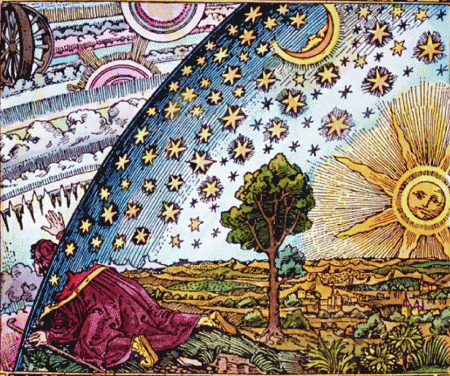
It was not until the development of non-Euclidean geometries, in the nineteenth century, that it was possible to resolve the paradox logically. These geometries allow one to conceive of three-dimensional spaces which are finite Non-Euclidean but without edges, just like the surface of a sphere in two dimensions.
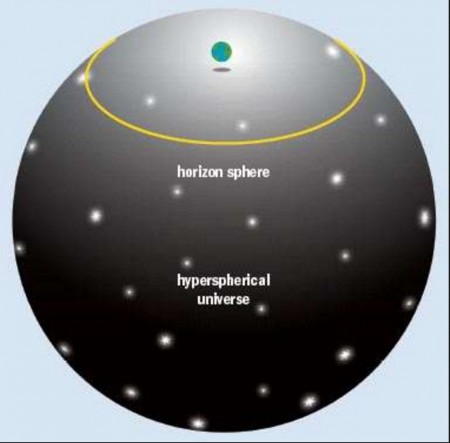
In the twentieth century, research on the global topology of space, Euclidean or not, also ends up with solutions of finite volume but no frontiers. Applied to cosmology, all of these new geometries allow for consideration of a finite Universe without any contradiction. These notions are nevertheless hardly intuitive. Even today, in the minds of many people, it is rather the Stoic conception which prevails. All those who, in relation to the big bang models proposed by modern cosmology, ask themselves into what the Universe expands, have this mental image of a cosmos-bubble with a moving edge, blowing up within an empty and infinite space. Nevertheless, this image should be abandoned. Relativistic cosmological models identify the Universe with space|or more precisely, with a more general physical and geometric entity, space-time-matter. Therefore, the Universe, whether it is finite or infinite, cannot inflate into anything else, since there is no space outside of itself.
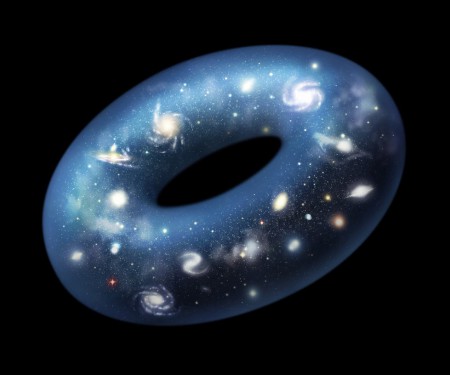
Thus, in the same way that the concept of the cosmic center has been eliminated by the cosmological principle, the notion of the edge of the Universe is eliminated by the “principle of the content”: the physical Universe contains all that is physical and nothing else. This declaration may seem trivial, but it is more profound than it seems. It says in particular that the Universe is not a physical object like others. Every object has an edge – even if it is not distinct, as is the case for the Sun or a galaxy. However, the Universe has no edge. Space and time are not empty receptacles in which the material world can be placed, in the manner of an object. They are an integral part of the Universe. To take up an apt expression by Nicholas of Cusa: “The fabric of the world has its center everywhere and its circumference nowhere.”

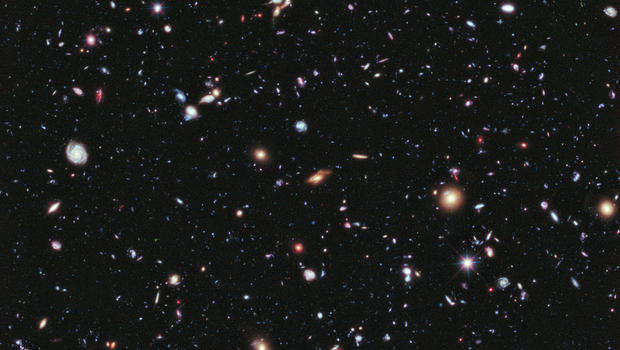

Hi friend, this script is very interesting. I would like to point out that Archytas was born in Taras, the only city in the world founded by Spartans in 706 BC. After the conquest, in 209 BC, the Romans called it Tarentum and is now called Taranto. Taras-Tarentum-Taranto is in Puglia, not in Sicily.
Greetings
Thank you for your comment, and of course you’re right, Taranto is not in Sicily! I made the correction.
Interesting. The story goes that in days of old, people could not conceive of a world that was curved. They could only conceive of a world that had an edge. Now it’s a different story. In modern times we have cosmologists who cannot conceive of a world that is not curved. They cannot conceive of a world that has an edge. But I rather think it does.